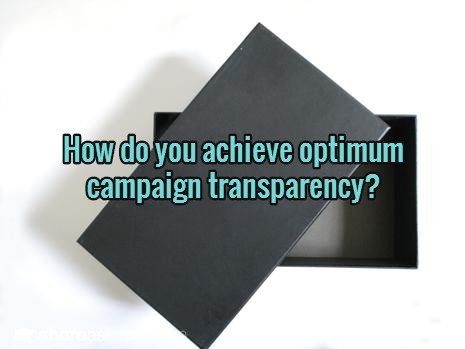
Just because we can, doesn’t mean it always is.
This is what I consistently hear as I make my way across the programmatic and non-programmatic landscape of media, advertiser and publisher. Both the user and non-user of digital planning and buying tools (in and out of video) continue to call for greater transparency.
I always knew transparency was possible but I had no idea just what that meant until I joined the programmatic ranks of TubeMogul. I’m consistently blown away by the quality and quantity of information available to marketers upfront and in real time that further innovate the planning, buying and measurement process. Inversely, I am gob smacked by continued practices that do not.
On both sides of programmatic (buying and selling), there’s a need for greater transparency that encompasses audiences, site placement, ad viewability information but above all, fee structures.
When the platform providers get this right, the conversation shifts dramatically. This is where true value is exchanged, true strategy is fostered and real integrity is delivered. This is the environment and the conversation I have always been attracted to and for the first time I feel completely comfortable in fielding this type of interrogation.
Currently, digital video provides brands and agencies with a wealth of audience and performance data, and new programmatic tools are being launched at a rapid rate, improving overall on-target impressions and audience data. In fact Australia continues to prove to be a pioneer as we move on into automated trading for all sight, sound and motion formats (including television).
But how do you achieve optimum campaign transparency? This issue – centred around performance and pricing – will define the success of programmatic video in the next few years. Brand marketers want to know what they are getting, and they deserve to. The black box practices are on their way out.
Some agencies and programmatic players are still cloaking their services and margins through ad packaging that hide the full scale of the fees they collect. Soon enough, advertisers will become increasingly savvy about these programmatic practices, and they will want to make their own independent decisions about price and placement, getting complete transparency on every component of their trading strategy.
Programmatic video advertising is becoming complex and clear-cut, at the same time, as marketers come to recognise the impact of video branding. More features and tool sets are being added to platforms, while the real power and sophistication lies in its increased simplicity.
In the arena of transparency, I would ask that advertisers ask these questions:
- On what publisher does my ad appear on the web?
- Where on the page does my ad appear?
- Who saw my ad? Where does my data come from?
- How much did we pay the publisher?
Those questions should be raised by every brand before they commit to a digital video advertising campaign. Programmatic players will no longer be able to skirt around the true message that should follow.
In tandem with better transparency, brands also want unified standards in order to measure their campaign return on investment, and see how their digital video ads are performing against other channels in the marketing mix.
Better transparency and measurement are the two factors that will trigger an explosion in spend, and result in brands complementing TV with multiple screen activity. Shortly, brands will be able to secure full transparency across one hundred percent of the video inventory that is being offered to them – no matter if its via real-time bidding, private exchanges, programmatic direct deals, or other means of buying video inventory.
If there is no transparency for marketers to know where their ads really run, site-level reporting can show them, in real-time, where every single paid impression ran.
When there is no way for advertisers to know if their video had actually been seen, viewability reporting can tell them what they can do about it. An example of this in action is when Tubemogul founded OpenVV – a consortium of companies that promoted viewability – and made the software available to anyone to use, in order to make the entire industry more accountable.
In my view, transparency is related to:
- website, ad unit and audience transparency: what level of visibility your programmatic tools give you in the planning process, and optimising and post campaign reporting.
- the commercial factors: how clear is the actual inventory price at site, page and player level. Does the buyer/agency know and pass on the exact cost per impression, technology fee and ad serving fee.
- delivery & performance; it should be revealed from day one of the campaign
- accessibility; the client should be able to log into the platform at any time and see all the above levels of transparency at any time
Advertisers need to understand, in fact demand these deeper levels of transparency. Our view is that all inventory has a value, and advertisers have a right to determine what they are willing to pay. The only way they can make an independent decision is if the technology gives them complete, consistent transparency on every component of their trading.